The Nebraska Cornhuskers football team represents the University of Nebraska–Lincoln in NCAA Division I's Football Bowl Subdivision, competing within the Big Ten Conference. Their home games have been played at Memorial Stadium since 1923, boasting a remarkable sellout streak since 1962, making attendance a major part of the program's identity.
1900: Iowa joins the Big Nine
A year later the schools became founding members of the Western Interstate University Football Association and played annually in Omaha (or suburb Council Bluffs) until Iowa joined the Big Nine (now the Big Ten) in 1900.
1900: Early Period of Success
Beginning in 1900, the Nebraska Cornhuskers football program experienced an extended period of success.
1901: Early Dominance
Starting in 1901, the Nebraska Cornhuskers experienced early dominance, including a twenty-four-game win streak.
1904: Continued Win Streak
By 1904, Nebraska continued its twenty-four game win streak and established itself as a regional powerhouse.
1906: Annual Series with Kansas Began
In 1906, Nebraska began playing Kansas every season. This was the start of the longest uninterrupted streak in Division I until 2010.
1907: Nebraska Field deemed inadequate
In 1907, Nebraska Field was considered inadequate, which later led to plans to build a new stadium.
1908: Antelope Field Conditions
Prior to 1908, Nebraska played home games at Antelope Field, known for being either very hard or muddy.
1909: Nebraska Field Opens
In 1909, Nebraska Field opened at the corner of North 10th and T Street, replacing Antelope Field.
1911: Ewald Stiehm Hired
In 1911, Ewald O. "Jumbo" Stiehm was hired as Nebraska's first full-time coach.
1913: Kansas State Joins MVIAA and Threatens Boycott
In 1913, Kansas State (KSU) joined the MVIAA and threatened to boycott their game against Nebraska due to the presence of a black player on Nebraska's roster. The game was played as scheduled.
1915: Invitation to Second Ever Bowl Game Declined
In 1915, Nebraska declined an invitation to face Washington State in the second bowl game ever played, due to the cost of travel.
1915: Momentum toward steel-and-concrete stadium
In 1915, significant momentum built toward constructing a steel-and-concrete stadium due to the Nebraska Cornhuskers football program's success and the deteriorating condition of Nebraska Field.
1916: End of Early Success Period
By 1916, Nebraska had achieved five undefeated seasons, and went thirty-four games without a loss, marking the end of an early era of success.
1920: Signs with Decatur Staleys
In 1920, Guy Chamberlin, Nebraska's first consensus All-American, signed with the Decatur Staleys (now the Chicago Bears).
1920: Blue practice jerseys worn against South Dakota
In 1920, Nebraska wore blue practice jerseys against South Dakota when the visiting Coyotes mistakenly brought their home reds to Lincoln.
November 30, 1922: Nebraska defeats Notre Dame
On November 30, 1922, Nebraska secured a 14–6 victory over Notre Dame, marking the final game played at Nebraska Field.
October 13, 1923: Memorial Stadium Opens
On October 13, 1923, the unfinished Memorial Stadium opened, dedicated to Nebraskans who served in various wars, with an initial capacity of 31,080.
1923: Memorial Stadium Established
In 1923, Memorial Stadium became the home field for the Nebraska Cornhuskers football team.
1923: Nebraska Field torn down and Memorial Stadium construction begins
In early 1923, Nebraska Field was demolished, and construction commenced on Memorial Stadium on the same site.
1926: Start of uninterrupted series
From 1926 to 2010, Nebraska and Iowa State played each other uninterrupted as they moved from the Big Eight to the Big 12.
1930: Helmets used as early as 1930
As early as 1930, Nebraska alternated between plain white or red helmets.
1932: Red helium balloon tradition begins
As early as 1932, fans at Memorial Stadium released red helium balloons when Nebraska scores its first points.
1933: Jersey numbers added to uniforms
In 1933, jersey numbers were added to solid-colored uniforms, establishing a consistent design.
1937: Sam Francis Drafted First Overall
In 1937, Sam Francis was drafted first overall into the National Football League.
1939: Nebraska at Manhattan Televised
In 1939, Nebraska's trip to Manhattan to play Kansas State was televised locally. This was the second televised college football game.
1940: End of MVIAA Dominance
By 1940, Nebraska's dominance in the MVIAA had waned, marking the end of an era.
1941: First Bowl Game Appearance
In 1941, Nebraska played in its first bowl game, the Rose Bowl, losing to Stanford.
1947: Start of Six Games
From 1947 through 2010, NU won five of just six games in the series
1948: Colorado joins MVIAA
In 1948, Nebraska and Colorado began playing regularly when Colorado joined the MVIAA.
1951: Inaugural Hall of Fame Class
In 1951, three Cornhuskers – Ed Weir, Dana X. Bible, and Fielding H. Yost – were members of the College Football Hall of Fame's inaugural class.
1962: Bob Devaney's Hiring
In 1962, Bob Devaney was hired as head coach and transformed Nebraska into a national football power.
1962: Devaney Hired, Conference Title Drought Ends
In 1962, Bob Devaney was hired, ending Nebraska's conference title drought and winning eight titles in eleven years.
1962: Consecutive sellout streak begins at Memorial Stadium
In 1962, Nebraska began a streak of consecutive sold-out games at Memorial Stadium, setting an NCAA record for any sport.
1962: Memorial Stadium Sellout Streak Begins
Since 1962, every Nebraska Cornhuskers home game at Memorial Stadium has been sold out.
1964: "Blackshirts" tradition originates
In 1964, the "Blackshirts" tradition originated when Bob Devaney wanted a way to more quickly distinguish between various units by having starting defensive players wear black jerseys during practice.
1968: Stripes added to pants
From 1968 through 1994, Nebraska's pants had two stripes down each side.
1969: Consecutive Bowl Game Streak Begins
In 1969, Nebraska began a record-setting streak of thirty-five consecutive bowl game appearances.
1969: Nebraska's Win Streak Against Kansas Begins
In 1969, Nebraska started a thirty-six-game winning streak against Kansas, which became the second-longest win streak over an opponent in college football history.
1970: Single 'N' becomes permanent helmet design
In 1970, a shortage of "U" stickers led to the use of the single "N" on Nebraska's helmets, which became permanent after a national championship season.
1971: Another National Championship
In 1971, Nebraska secured another national championship, further cementing Devaney's legacy.
1971: Stan Hegener Drafted Last
In 1971, Stan Hegener was drafted with the last pick of the draft into the National Football League.
1971: Player names on jerseys for bowl games
Starting with the 1971 Orange Bowl, player last names appeared on jerseys for bowl games.
1973: Official walk-on program begins
In 1973, Nebraska began an official walk-on program when the NCAA reduced the number of scholarships schools could offer.
1973: Osborne Succeeds Devaney
In 1973, Tom Osborne succeeded Bob Devaney and continued to win conference championships.
1973: Tom Osborne Named Successor
In 1973, Tom Osborne succeeded Bob Devaney as head coach, continuing the program's success.
1981: Iowa upsets Nebraska
In 1981, Iowa's 10–7 upset of No. 7 Nebraska was instrumental in Hayden Fry's Iowa rebuild.
1982: Colorado declares Nebraska as primary rival
In 1982, Bill McCartney declared Nebraska to be Colorado's primary rival, though Colorado was among the country's worst programs at the time.
1984: Irving Fryar Drafted First Overall
In 1984, Irving Fryar was drafted first overall into the National Football League.
1984: Stripes and TV numbers re-added
In 1984, stripes and TV numbers were permanently re-added to Nebraska's jerseys, although both decreased in size as sleeves shortened.
1988: Offensive Player of the Year
In 1988, Roger Craig was named Offensive Player of the Year.
1988: Last names permanently affixed to all jerseys
In 1988, last names were permanently affixed to all Nebraska jerseys.
1989: Switzer Resigns
In 1989, Barry Switzer abruptly resigned from Oklahoma in the wake of NCAA sanctions.
1992: Mirage Bowl in Tokyo
In 1992, Nebraska played Kansas State in the Mirage Bowl in Tokyo, where Nebraska won 38-24.
1992: All-white uniforms worn
Nebraska wore all-white uniforms in its first three road games of 1992, losing three of these games; the "surrender suits" have been used sporadically in the decades since.
1993: Super Bowl Representation
From 1993 until 2019, Nebraska was represented by at least one player in each Super Bowl.
1993: Controversial Championship Game Loss
In 1993, Nebraska suffered a controversial championship game loss, motivating them to pursue a national title.
1993: Close Call in Title Game
In 1993, Tom Osborne experienced a last-second title game loss, motivating his pursuit of a national championship in the following season.
1994: Pants stripes discontinued
From 1968 through 1994, Nebraska's pants had two stripes down each side before being removed in 1995.
1994: First Major-Poll National Championship for Osborne
In 1994, Tom Osborne won his first major-poll national championship as head coach of Nebraska.
1994: National Championship Claimed
In 1994, the Nebraska Cornhuskers secured another national championship.
1994: "Tunnel Walk" tradition begins
Since 1994, Nebraska's home games have opened with the "Tunnel Walk" as the team takes the field before kickoff, typically to the Alan Parsons Project instrumental "Sirius."
1995: 1995 Orange Bowl
In 1995, Nebraska played in the Orange Bowl, which was designated as the national championship game. Tommie Frazier led two fourth-quarter touchdown drives, securing Tom Osborne's first consensus national title as head coach.
1995: Pants stripes removed
In 1995, Nebraska removed the two stripes down each side of their pants.
1995: Another Championship Season
In 1995, Nebraska, led by Tommie Frazier and Ahman Green, dominated opponents and went on to win another national championship.
1996: Adidas becomes official sponsor
In 1996, Adidas became Nebraska's official shoe and uniform sponsor.
1996: Big 12 Inception
In 1996, Nebraska played in the Big 12's North Division after the conference's inception.
1997: Largest win over Cyclones
During the 85-year consecutive playing streak from 1926 to 2010, Nebraska recorded their largest win over the Cyclones, a 77–14 win in Lincoln in 1997, when Tom Osborne won his last national title.
1997: Big 12 Championship Win
In 1997, Nebraska won the Big 12 Championship Game in Tom Osborne's final season as head coach.
1997: National Title Victory
In 1997, Nebraska, led by Scott Frost, won its third national title in four years, defeating Texas A&M for the Big 12 title and Tennessee in the Orange Bowl.
1997: Tom Osborne's Retirement
In 1997, Tom Osborne retired after a successful coaching career with Nebraska Cornhuskers.
1998: Kansas State Ends Losing Streak to Nebraska
In 1998, Kansas State ended its twenty-nine-year losing streak to Nebraska with a 40-30 victory.
1999: Major Expansion of Memorial Stadium Begins
In 1999, major expansions of East, West, and North Stadium began, which continued through 2013, ultimately raising the stadium's capacity to 85,458.
2001: Colorado defeats Nebraska
In 2001, Colorado defeated No. 1 Nebraska 62–36, leading to BCS controversy when one-loss NU was selected to play in the national championship game over two-loss CU.
2002: Side panels on jerseys and pants introduced
In 2002, Nebraska featured large side panels on its jersey and pants and wore all-white in every road game; the changes were unpopular among fans and most were reverted, which included the return of pant stripes.
2002: BCS National Championship Game Appearance
In 2002, Nebraska, under coach Frank Solich, made it to the BCS National Championship Game.
2003: Solich Fired
In 2003, Frank Solich was fired after a 7-7 season.
2003: Consecutive Bowl Game Streak Ends
In 2003, Nebraska's NCAA record thirty-five straight bowl game appearances streak came to an end.
2004: Bowl Streak Ends
In 2004, Nebraska's lengthy bowl streak came to an end during Frank Solich's tenure.
2004: Nebraska's Win Streak Against Kansas Ends
In 2004, Nebraska's thirty-six-game winning streak against Kansas ended.
2006: Tunnel Walk Entrance Moved
In 2006, the Tunnel Walk entrance was moved to the northwest corner of the field upon completion of the Osborne Athletic Complex.
2007: Callahan Fired, Pelini Hired
In 2007, Bill Callahan was fired and replaced by Bo Pelini.
2009: Alternate uniforms worn for one game
Since 2009, Nebraska has worn alternate uniforms for one game in most seasons.
2010: End of Six Games
From 1947 through 2010, NU won five of just six games in the series
2010: Nebraska Joins Big Ten, Series with Kansas Ends
In 2010, Nebraska joined the Big Ten Conference, which ended the annual series with Kansas that had been uninterrupted since 1906.
2010: Teams depart the Big 12
In 2010, the Cornhuskers and Buffaloes departed the Big 12.
2011: Nebraska Joins Big Ten
In 2011, Nebraska joined the Big Ten conference, and the teams have played regularly since then.
2011: Teams play annually for the Heroes Trophy
Since Nebraska joined the Big Ten in 2011, the teams have played annually for the Heroes Trophy.
2012: Red helium balloon tradition paused
In 2012, the tradition of releasing red helium balloons was paused due to global helium shortages and environmental concerns.
2013: Memorial Stadium expansion completed
By 2013, major expansions of East, West, and North Stadium that began in 1999 raised the stadium's capacity to 85,458, completely enclosing the original superstructure.
2014: Bits of Broken Chair Trophy Created
In 2014, the $5 Bits of Broken Chair Trophy was created from a Twitter exchange between the official account for Minnesota mascot Goldy Gopher and the satirical "Faux Pelini". Publicized on-field exchanges followed in 2014 and 2015.
2015: On-field Exchanges
In 2015, publicized on-field exchanges continued after the creation of the "$5 Bits of Broken Chair Trophy".
2017: Apparel deal signed with Adidas
In 2017, Nebraska and Adidas signed an eleven-year, $128-million apparel deal.
2017: Early Inductees Recognized
In 2017, the school recognized eight early College Football Hall of Fame inductees, including Guy Chamberlin, whose career predated the use of numbers on jerseys.
2019: Blackshirts-themed uniforms worn
In 2019, Nebraska wore non-throwback alternate designs, including Blackshirts-themed uniforms.
2019: Zac Taylor Named Bengals Coach
In 2019, Zac Taylor, a former Nebraska quarterback, was named head coach of the Cincinnati Bengals.
2020: Blackshirts-themed uniforms worn
In 2020, Nebraska wore non-throwback alternate designs, including Blackshirts-themed uniforms.
2022: Red helium balloon tradition paused
In 2022, the tradition of releasing red helium balloons was paused again due to global helium shortages and environmental concerns.
2023: Matt Rhule Hired as Head Coach
In 2023, Matt Rhule was hired as the head coach for the Nebraska Cornhuskers football team.
2023: Matt Rhule Hired
In 2023, Matt Rhule was hired to coach the Nebraska Cornhuskers after a historically poor stretch.
2023: "Volleyball Day in Nebraska"
In 2023, Memorial Stadium hosted "Volleyball Day in Nebraska", setting a stadium record and the highest attendance ever recorded for a women's sporting event with 92,003 attendees.
2023: Tunnel Walk Entrance Moved Again
In 2023, the Tunnel Walk entrance was moved to the northeast corner when the home locker room was moved to the Osborne Legacy Complex.
2023: Blue-trimmed jerseys worn for stadium's centennial
Nebraska celebrated the stadium's hundredth anniversary in 2023, wearing blue-trimmed jerseys to commemorate the occasion.
2024: Colorado rejoins Big 12
In 2024, Colorado rejoined the Big 12.
2024: Big Ten Disbands Divisions
In 2024, the Big Ten conference disbanded its division system, which had previously consisted of the Leaders Division and West Division.
2024: Traditional walk-on programs essentially ended
In 2024, traditional walk-on programs were essentially ended when the NCAA began limiting roster sizes.
2024: Iowa holds the Heroes Trophy
Nebraska leads the series 30–22–3. Iowa holds the Heroes Trophy after its 2024 win in Iowa City.
November 28, 2025: Next game scheduled
The Nebraska Cornhuskers and Iowa Hawkeyes are scheduled to play on November 28, 2025.
2025: Minnesota Holds the Trophy
Minnesota won in Minneapolis in 2025 and currently holds the $5 Bits of Broken Chair Trophy.
2027: Future Game
The teams will play next in 2027.
Mentioned in this timeline
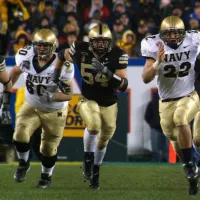
College football is a popular amateur sport in the United...
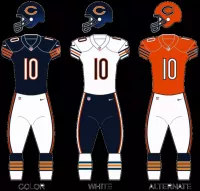
The Chicago Bears are a professional American football team based...
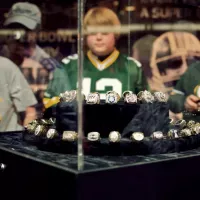
The Super Bowl is the annual championship game of the...

The Cincinnati Bengals are an NFL team based in Cincinnati...
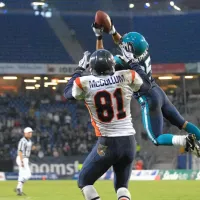
Football is a family of team sports primarily involving kicking...

Miami is a major coastal city located in Florida United...
Trending

5 months ago Blue Angels Prepare to Soar Over Seattle for Seafair Weekend Festival Air Show
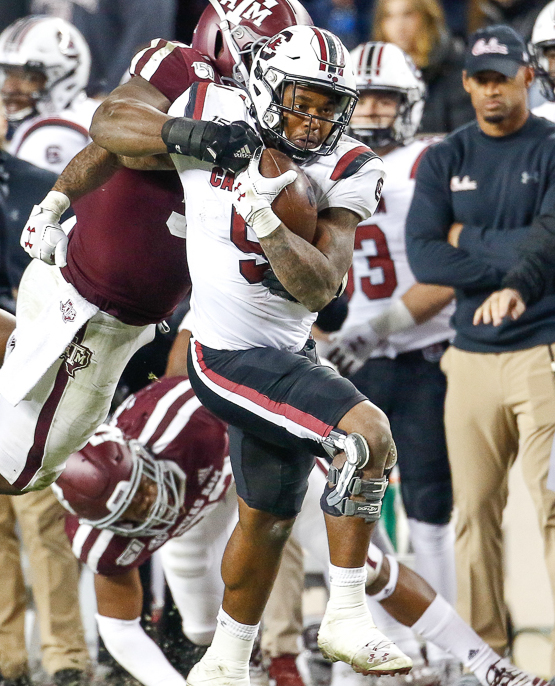
Rico Dowdle is an American professional football running back currently playing for the Carolina Panthers in the NFL He played...

7 months ago Ricky Pearsall sidelined from OTAs with hamstring injury; recovery and return uncertain.
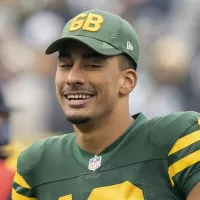
2 months ago Jordan Love's wife, Ronika Stone, supports the Packers QB, balancing personal and professional life.

15 days ago Johnny Depp Describes His Life with Vanessa Paradis as 'Blissful' in Recent Statement.
6 months ago Denver Rattled: Rare 2.9 Magnitude Earthquake Shakes Colorado, Raising Questions About Seismic Activity
Popular

Candace Owens is an American conservative political commentator and author...
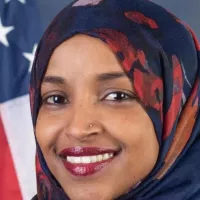
Ilhan Omar is an American politician currently serving as the...

XXXTentacion born Jahseh Dwayne Ricardo Onfroy was a controversial yet...

Tom Cotton is an American politician and Army veteran currently...

Kelsey Grammer is an accomplished American actor producer and singer...
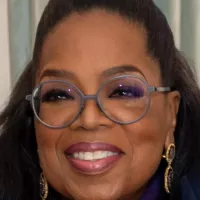
Oprah Winfrey an American talk show host television producer actress...